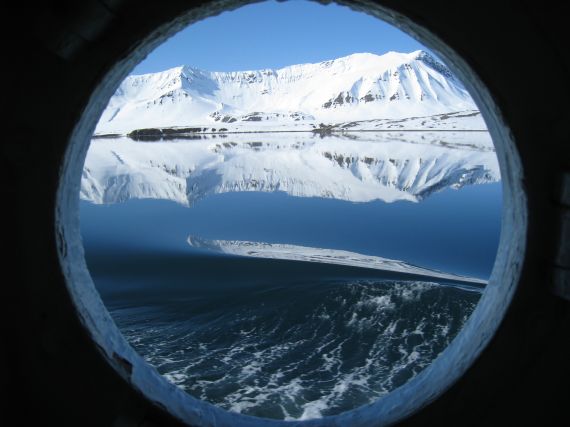This week’s Imaggeo on Mondays is brought to you by the photographer himself, Fabien Darrouzet who captured the beautiful glacial landscape during a summer expedition to the Arctic.

“Arctic through a porthole” by Fabien Darrouzet, distributed by the EGU under a Creative Commons Licence.
This picture was taken in Svalbard (78° lat.) in June 2012. I was there for one week in order to observe the transit of the planet Venus in front of the Sun. I came here because at this time of the year, the Sun is shining all day (midnight Sun), so it was possible to see Venus during most of the transit (for over six and a half hours!), and not only during its last minutes, as was the case for most parts of Europe.
During the days before the transit, I made a boat trip inside the fjords around Longyearbyen, and in particular in the Isfjorden, where I took this picture through the porthole of the boat. This is the southern border of a territory of Svalbard named Oscar II Land. This area, and indeed all of Svalbard, is covered by snow most of the time, and just a few plants can germinate during July-August, when the average temperature is 5°C.
Svalbard is a very important island and region because it is dominated by glaciers (60% of all the surface), which are important indicators of global warming and can reveal possible answers as to what the climate was like up to several hundred thousand years ago. Those glaciers are studied and analysed by scientists in order to better observe and understand the consequences of the global warming on our Earth.
By Fabien Darrouzet, Belgian Institute for Space Aeronomy
Imaggeo is the EGU’s online open access geosciences image repository. All geoscientists (and others) can submit their images to this repository and since it is open access, these photos can be used by scientists for their presentations or publications as well as by the press and public for educational purposes and otherwise. If you submit your images to Imaggeo, you retain full rights of use, since they are licensed and distributed by the EGU under a Creative Commons licence.
